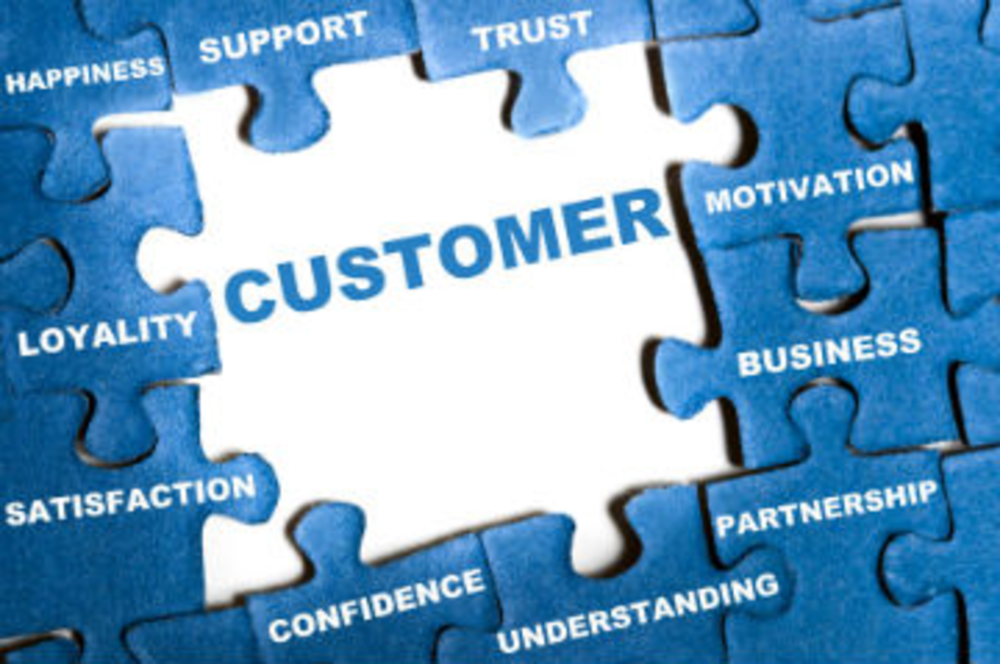Just like a fingerprint, every company is different. Every organization builds its own reputation and has its own set of customer expectations. And while the wizards of the marketing world still haven’t concocted the magic formula for delivering a top-notch customer experience, Bruce Temkin, managing partner of Temkin Group and author of the “2013 Temkin Experience Ratings” report, says purposeful leadership, employee engagement, compelling brand values, and customer connectedness are essential elements needed to creating enchanting experiences.
There’s an old saying that goes “happy wife, happy life,” but perhaps brands need to tweak the saying to “happy employee, happy company.” Out of the four cornerstones of customer experience (CX) excellence, Temkin puts extra emphasis on employee engagement. Publix and Trader Joe’s received the study’s highest experience rating scores, which Temkin partially attributes to brands’ levels of employee engagement.
“They both treat their employees really well,” he says. “I think if you went into either one of those markets and talked to the employees, you would see a markedly different level of energy and enthusiasm than if you went into Stop & Shop.”
Having strong employee engagement creates what Temkin calls the employee engagement virtuous cycle. He says engaged employees deliver a better customer experience; a better customer experience creates customer loyalty; and customer loyalty leads to more profitable business results.
However, Temkin says that fostering employee engagement has slipped to the bottom of companies’ to-do list as HR dedicates more time and resources to “transactional HR,” such as hiring, compensation, and training.
To gauge employee engagement, Temkin advises business to ask employees the following three questions: Do they understand the company’s mission, and their role in fulfilling that mission? Are they asked for feedback, and does the company act on their feedback? And, are employees provided with the tools and training needed to excel? Temkin says Temkin Group measures employee engagement by factors including employee likelihood to stay late, help coworkers, or recommend their place of business to a friend or family member.
As for the companies at the bottom of the CX ratings, including US Airways and Time Warner Cable, Temkin says improving customer experience takes more than just quick fix.
“They generally have fundamental problems as opposed to simple problems,” Temkin says. “When it comes to customer experience, you have to decide are you in a continuous improvement mode or are you in need of radical change? A lot of companies at the bottom of the list are in need of radical change
When radical change is required, businesses often need to bring on a senior executive to work on damage control full-time, Temkin says.
Temkin acknowledges that customer experience can be influenced by reputation; however, he claims these reputations are often well deserved.
“Most industries earn their reputations,” Temkin says “Health plans have been miserable. TV service providers have been miserable. Internet service providers have been miserable. A lot of data suggests that they’ve historically delivered horrible customer experiences. What happens is industries end up cultivating their mediocrity.”
While health plans received some of the lowest Temkin Experience Rating scores, taking up seven out of the 15 bottom slots, grocery store chains, fast food restaurants, and retailers achieved some of the highest rating. In fact, according to The American Customer Satisfaction Index’s (ACSI) annual E-commerce Report, created in partnership with customer experience analytics organization ForeSee, customer satisfaction for e-commerce sites jumped 1.2% this year and scored an 81.1 out of a possible 100 on the Index.
ForeSee President and CEO Larry Freed acknowledges that consumers’ multichannel shopping habits provide them with more power and knowledge, which means more competition for businesses. For example, instead of just accepting on a set price or relying on an associate’s recommendation, consumers can now turn to on online product reviews, social media, and price comparisons.
“Their access to that information has increased, first, with the Web and now even more with mobile. There are competitive choices as well [that are] no longer limited by location,” Freed says. “If companies fail to meet expectations, consumers will go elsewhere, penalizing those that haven’t provided a great customer experience.”
Part of that great experience for many customers is perceived value. David Van Amburg, managing director of the ACSI, urges companies that rely on promotions to make sure they’re cutting price, not value. “Price often can get a customer into a store, but it’s quality that keeps the customer coming back for the long term,” Amburg says. “Repeated discounting tends to set greater expectations for even more discounting, which ultimately damages the bottom line, and often creates a ‘cheapening effect’—a perception that the merchandise and or services are really not worth what the customer may have thought they were worth.”
Rather than having a battle between the online and offline worlds, Freed encourages brands to create a “complementary experience” between the two.
“The best thing a retailer can do is ensure that all of its channels are working together to provide a seamless and satisfying experience,” Freed says. “Companies think within channels, [such as] Web versus store versus mobile, etcetera. Consumers think about a company, a brand.”








